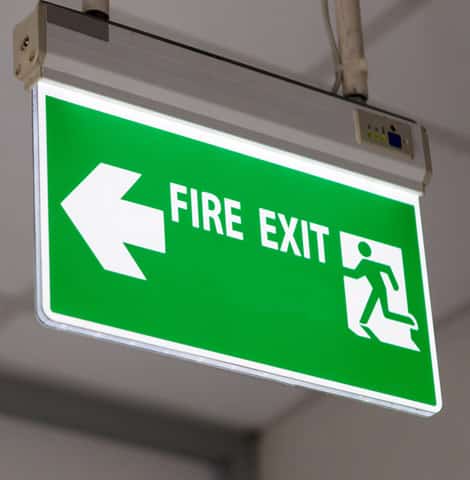Emergency Lighting
Supply, installation and maintenance
Emergency Lighting Systems
Emergency Lighting
Emergency lighting is one of the most important systems to put in place for the protection of people and property
At EFire we specialise in the design, installation and maintenance of all types of emergency lighting systems in Yorkshire, Norfolk and Swindon, from simple self-contained units to large central battery systems.
Our qualified and experienced design team are able to advise you on the types of systems available for your property and business type in accordance with current legislative and British Standard requirements.

LED Emergency Lighting Systems
With the advancement of LED lighting technology EFire is able to offer an alternative means of illumination to that of traditional fluorescent and incandescent lamped fittings. LED emergency lighting systems provide a distinct advantage over traditional systems as the LED's have a life expectancy of 50,000hrs whereas traditional fittings require lamp changes at 5-6,000 hours, this significantly reduces ongoing maintenance and lamp replacement costs.
EFire installs a range of LED emergency lights that are certificated and comply with the requirements of British Standard 60598-2-22 2015.
Benefits of LED emergency lighting:
- Reduced ongoing maintenance costs
- Extended lifespan
- Increased energy efficiency with savings of up to 30%
- Modern and contemporary designs available
BE PROACTIVE WITH YOUR PROTECTION
Don't wait until it's too late. Act now!
Legal Requirements
An emergency lighting system is required to operate in an emergency situation when the mains powered illumination fails through a fault or power failure. As the failure of the mains powered lighting system could be a result of a fire or a power cut the sudden darkness could lead to confusion and risk with the occupants of the building.
The main reason for installing an emergency lighting system is to enable the safe evacuation of the people within the building in accordance with fire safety legislation procedures.
Emergency lighting systems are designed, installed and maintained in compliance with the recommendations of British Standard 5266 Part 1 2016 and Part 8 2004 which clearly defines the types of premises that require such systems and the level of illumination required for a safe evacuation.
Responsibilities
If the emergency lighting system forms part of the fire safety arrangement within a building then it is subject to the requirements of the Regulatory Reform (Fire Safety) Order 2005 and the required risk assessment. Please refer to our page Fire Risk and Fire Safety Management which covers responsibilities.
Emergency Lighting Guide
The following terms and definitions are commonly used when referring to the types of systems available:
- Self-Contained: An emergency light where the charger and batteries are an integral part of the light fitting.
- Non-Maintained: An emergency light fitting that illuminates on normally lighting failure only.
- Maintained: An emergency light fitting that can be illuminated permanently or switched to illuminate an exit route or final exit, illuminates on normal lighting failure.
- Sustained/Combined: An emergency light combined with a mains light fitting for use as a general lighting system, illuminates on normal lighting failure.
- Central Battery System: An emergency lighting system that houses the batteries in one central location and provides light through slave luminaires.
- Slave Luminaire: An emergency light fitting that has no integral batteries or charger being powered via a central battery system.

The correct emergency lighting and evacuation plan can save lives. It is as simple as that.
Emergency Lighting
Regular maintenance will ensure your business is protected when you need it most.
It is vital that the emergency lights illuminate when the normal lighting system fails. EFire offer a variety of maintenance packages to suit your personal requirements in accordance with the recommendations of British Standard 5266 Part 8 2004. The following brief summary of test sequences for self-contained emergency lighting systems is recommended.
- Daily: Visually check that all maintained lamps are operating and that all mains power indicators are illuminated.
- Monthly: Complete the daily checks and test all emergency lights briefly to ensure they illuminate when mains power is removed. Upon restoring the mains power check that all mains healthy indicators are operating. Record the test results in the emergency lighting log book and ensure that all previously recorded and new faults are rectified.
- Annually: Complete all monthly tests but ensure that the fittings are illuminated for their full duration.
